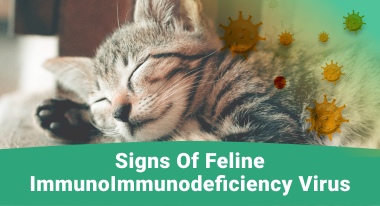Table of Contents
If you’re a cat owner, you know how important it is to keep your feline friend healthy and happy. Unfortunately, just like humans, cats can develop allergies that cause discomfort. Allergic dermatitis is a common skin condition in cats that can cause itching, inflammation, and hair loss, among other symptoms.
This article will explore the signs of allergic dermatitis in cats, how to diagnose the condition and the most effective ways to treat it. We’ll also discuss preventative measures to keep your cat from developing allergic dermatitis and when to seek veterinary care.
Feline Allergic Dermatitis: How to Recognize Symptoms in Your Cat
Feline dermatitis is a broad term that encompasses various types of skin inflammation that can affect your cat. As such, the symptoms can manifest in different ways.
Here are six common signs of cat dermatitis that you should watch out for
1. Persistent itching or scratching
2. Visible hair loss
3. Small bumps or lesions on the skin, particularly on the head, neck, and back
4. Redness, swelling, or hardening of a patch of skin
5. Barbering or hair pulling
6. Raw skin due to excessive scratching.
It’s important to note that feline dermatitis symptoms may not always be apparent. Skin rashes, bumps, and redness can be concealed by your cat’s fur, making it challenging to spot the condition. Therefore, keeping a close eye on your cat’s behavior and scheduling regular veterinary check-ups are crucial.
If your cat is scratching more frequently than usual, consider using a flea comb or running your fingers through their coat to check for signs of feline dermatitis. Early detection and treatment can help alleviate your cat’s discomfort and prevent the condition from worsening.
What Are the Signs of Feline Dermatitis in Cats
Feline dermatitis is a condition that affects a cat’s skin, and many factors, like allergies, flea bites, or an underlying medical condition, can cause it. The signs of feline dermatitis may vary depending on the severity and condition. Still, common symptoms include redness, itching, swelling, scabbing, and hair loss in localized or widespread areas.
Sometimes, your cat may excessively lick or groom certain parts of their body, causing irritation and secondary infections. For instance, you may see changes in your cat’s skin appearance or behavior. In that case, taking it for a veterinary check-up is essential to establish the root cause of the problem and gain proper treatment plans such as antibiotics, antihistamines, or topical medications.
Key Causes of Dermatitis in Cats
Dermatitis is a skin condition that affects many cats, causing irritation, inflammation, and discomfort. Several factors are responsible for dermatitis, from parasites and allergies to poor grooming habits and underlying medical conditions.

What are the common causes?
| #1. Allergies Cats can develop skin allergies from various sources, including food, flea bites, and environmental triggers like pollen, dust, or mold. Symptoms of allergic dermatitis include itching, redness, and scaly skin. #2. Parasites Skin parasites such as fleas and mites can also lead to dermatitis. Flea dermatitis is the most common parasitic dermatitis and can be prevented by regular flea control. #3. Bacterial & Fungal Infections Bacterial and fungal infections often occur when there is an underlying health condition or weakened immune system. Symptoms of these infections include red, swollen, and itchy skin, hair loss, and crusty skin lesions. #4. Immune System Disorders Immune system disorders like autoimmune diseases can also cause cat dermatitis. These types of dermatitis can be challenging to diagnose and treat due to underlying immune system-related causes. #5. Stress and Anxiety Stress and anxiety can also cause dermatitis in cats, as can trauma from scratches, bites, and other injuries. Chronic stress can trigger an inflammatory response, ultimately resulting in the development of dermatitis. |
How to Treat Allergic Dermatitis in Cats
When it comes to treating cat dermatitis, many options are available. The ideal treatment for your feline friend will depend on their individual needs. However, the most effective treatments aim to eliminate the root cause of dermatitis, whether it be fleas, a specific food, or another allergen irritating your cat’s skin.
In addition to removing irritant-causing dermatitis, it is crucial to address any injuries that may have occurred due to the condition.
Fortunately, there are numerous treatment options available for cat dermatitis. Some potential treatments for your cat may include:
- Antibiotics: These can help fight infections in cats by preventing the growth of harmful bacteria or by killing them off entirely.
- Corticosteroids: Oral or injectable steroids can help reduce swelling and inflammation, alleviating the adverse effects of severe dermatitis in cats.
- Antihistamines: If a specific allergen in their environment causes your cat’s dermatitis, antihistamines can relieve allergic reactions.
- Topical ointments: Certain ointments can soothe irritated or inflamed areas on your cat’s skin.
- Medicated shampoo: A medicated shampoo can soothe inflamed areas on your cat’s skin and relieve itchiness and discomfort.
- Dietary supplements: Fatty acid supplements and other dietary adjustments may help your cat avoid contracting feline dermatitis due to a food allergy.
It is vital to consult with your veterinarian to determine the best treatment for your cat’s specific needs. With the right treatment plan, your feline friend can find relief from the discomfort of dermatitis and enjoy a happy, healthy life.
How Is Cat Dermatitis Diagnosed?
A veterinarian can diagnose this condition by examining your cat’s medical history and identifying common symptoms. After the diagnosis, ask for a treatment plan from your vet to address the root cause of dermatitis.
If fleas are present, flea medicine will likely be administered to eliminate the source of the problem. Alternatively, if your cat has a known food allergy, a dietary change may be advised to alleviate symptoms. However, if initial treatment does not significantly affect your cat’s dermatitis, further testing may be necessary to determine a more conclusive diagnosis.
Some of the tests a veterinarian may conduct include biopsies, skin swabs, skin scrapings, fur plucks, allergen-specific immunoglobulin E (IgE) testing, and elimination diet trials. These tests can help identify the underlying cause of dermatitis and allow for a more targeted treatment approach.
To Summarize
Understanding the signs of allergic dermatitis in cats and taking appropriate action can cure your cat fast and prevent more severe health issues. Cat owners can help their feline friends avoid serious skin infections and other associated health problems by knowing the signs of feline dermatitis and seeking prompt veterinary attention.
Disclaimer: The content on the site is for educational purposes only, and it does not provide medical advice. The shared information must not be treated as a substitute for or alternative for medical practitioner advice, diagnosis, or treatment. Regarding any concerns about your pet’s health, seeking veterinary guidance is of utmost necessity. Each pet has specific health, fitness & nutrition needs. Do not disregard, avoid or delay pet health-related advice from veterinarians based on reading the information provided on this site.
FAQs
How to treat feline flea allergy dermatitis?
Answer: Treatment involves treating symptoms and preventing future infestations through medication and flea prevention methods, such as regular use of preventatives and cleaning the cat’s environment. Preventive care is essential for your cat’s long-term well-being and health.
How long does feline flea allergy dermatitis last?
Answer: Feline flea allergy dermatitis is a common skin condition in cats that can last anywhere from a few days to several months, depending on the severity of the allergic reaction and the effectiveness of treatment.
How to reduce the signs of feline flea dermatitis?
Answer: A good way to prevent it is to control fleas through treatments and cleaning the environment. Shampoos and topical treatments can help relieve irritated skin, and antihistamines or steroids can reduce itching and inflammation. However, continual exposure to fleas will still irritate even with treatment.
What treatments are available for feline flea dermatitis?
Answer: Feline flea dermatitis can be treated by eliminating fleas from the cat and its environment using medications that kill or prevent fleas. Severe cases may require medication. Soothing lotions and warm water baths can help with skin irritation too. Prevention is vital to manage future outbreaks.
What helps cats with allergic dermatitis?
Answer: Pet parents should first identify and remove the allergen from their cat. Certain medicines are effective for dermatitis, such as antihistamines and corticosteroids. Soothing their skin with medicated shampoos containing oatmeal or aloe vera is another way of treating allergic dermatitis. For severe cases, immunotherapy is recommended.



